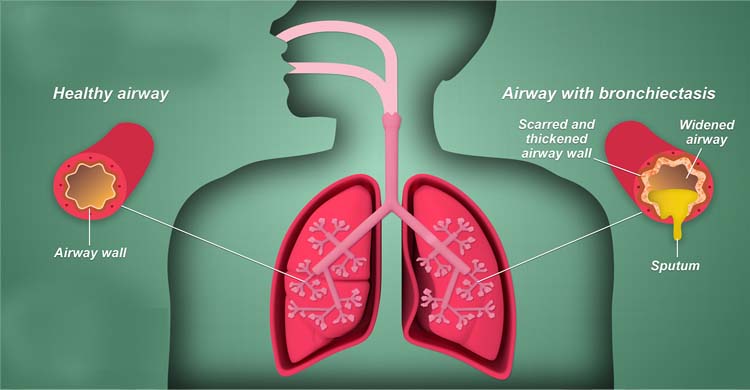DR. BRIJESH PRAJAPAT
MBBS, MD, DM
(PULMONARY & CRITICAL CARE MEDICINE)

Bronchiectasis is a condition where the bronchial tubes of your lungs are permanently damaged, widened, and thickened. These damaged air passages allow bacteria and mucus to build up and pool in your lungs. This results in frequent infections and blockages of the airways. It is is a long-term condition where the airways of the lungs become abnormally widened, leading to a build-up of excess mucus that can make the lungs more vulnerable to infection
It occurs when the walls of the airways (bronchi) thicken as a result of chronic inflammation and/or infection and results in mucus accumulating. In bronchiectasis, the walls of the bronchi are thickened from long-term inflammation and scarring. As a result of the damage, mucus produced by the cells lining the bronchi does not drain normally. Mucus build-up can cause infection. A cycle of inflammation and infection can develop, leading to loss of lung function over time.
It may use various tests to diagnose bronchiectasis and help determine the cause. These tests can include: